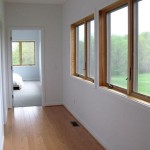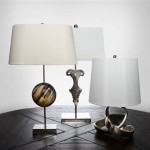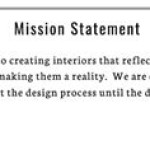Interior Design Services List
Interior design services encompass a broad spectrum of expertise, encompassing everything from conceptualization to project management and execution. From crafting aesthetically pleasing spaces to optimizing functionality and comfort, interior designers play a pivotal role in transforming living, working, and commercial environments. Understanding the various services offered by interior designers enables individuals and businesses to make informed decisions when seeking professional assistance for their design projects.
Conceptualization and Design
The foundation of any successful interior design project lies in its initial conceptualization. This phase involves understanding the client's vision, needs, and lifestyle preferences. Interior designers delve into the project's scope, considering factors such as the space's purpose, size, and existing architectural elements. They then translate these insights into a comprehensive design concept that reflects the client's style and aspirations.
This process may involve creating mood boards, sketches, and digital renderings to visually communicate the proposed design. Interior designers may also recommend specific materials, furniture, and finishes that align with the chosen aesthetic. The design concept serves as a blueprint for the project's subsequent stages, providing a clear direction for the implementation.
Space Planning and Layout
Efficient space planning is crucial for creating functional and comfortable environments. Interior designers excel at optimizing space utilization, considering factors such as traffic flow, furniture placement, and the integration of essential amenities. They may utilize floor plans, 3D models, and other visualization tools to showcase different layout configurations.
By analyzing the existing space and understanding the client's needs, interior designers can propose layouts that maximize functionality, minimize clutter, and enhance usability. This involves considering factors like natural light, storage requirements, and the placement of key features, such as seating areas, workstations, or kitchen appliances.
Material Selection and Procurement
The choice of materials plays a significant role in shaping the overall aesthetic and functionality of a space. Interior designers have a comprehensive understanding of various materials, finishes, and their properties. They can provide guidance on selecting materials that are not only visually appealing but also durable, sustainable, and appropriate for the intended use.
From flooring and wall coverings to furniture and lighting, interior designers assist clients in sourcing high-quality materials that meet specific requirements. They may also have established relationships with suppliers and vendors, offering access to a diverse range of options and ensuring competitive pricing.
Project Management and Coordination
Bringing an interior design project to life involves careful planning, coordination, and execution. Interior designers play a pivotal role in managing the project workflow, ensuring timely completion and staying within budget. They coordinate with contractors, suppliers, and other professionals involved in the project, ensuring smooth communication and collaboration.
Project management includes tasks such as scheduling appointments, managing timelines, and overseeing the installation process. Interior designers also ensure that all aspects of the project adhere to the agreed-upon design concept and specifications. Their expertise in project coordination streamlines the entire process, minimizing delays and ensuring a successful outcome.
Lighting Design
Lighting plays a crucial role in setting the mood and ambiance of a space. Interior designers understand the principles of lighting design, considering factors such as natural light, artificial light sources, and their placement. They can create a harmonious and functional lighting plan that enhances the beauty of the space and meets specific needs.
This may involve selecting appropriate lighting fixtures, determining the appropriate light levels for different areas, and integrating lighting with other design elements. By carefully planning the lighting scheme, interior designers can create inviting spaces that highlight architectural features and enhance the overall visual experience.
Color and Texture Selection
Color and texture play a vital role in shaping the aesthetic appeal and emotional impact of a space. Interior designers have a deep understanding of color theory and the psychological effects of different colors. They can guide clients in selecting color palettes that complement the chosen style, create desired moods, and enhance the overall visual harmony of the space.
Texture also plays a significant role in adding visual interest and tactile appeal. Interior designers can recommend various materials and finishes with different textures, such as smooth surfaces, textured fabrics, or patterned tiles. By strategically incorporating color and texture, they can create a visually engaging and multi-sensory experience.
Furniture Selection and Placement
Furniture selection and placement are crucial for creating functional and comfortable spaces. Interior designers bring a discerning eye to furniture design, understanding the ergonomics and aesthetic considerations involved. They can help clients choose furniture that complements their existing décor, suits their lifestyle, and fits seamlessly into the overall design concept.
They consider factors such as scale, proportion, and the flow of traffic when positioning furniture within a room. Interior designers may also suggest custom furniture solutions to cater to specific needs or to maximize space utilization. Their expertise ensures that furniture selection and placement enhance the functionality, comfort, and visual appeal of the space.
Window Treatments and Accessories
Window treatments and accessories complete the finishing touches of an interior design project. Interior designers can offer guidance on selecting curtains, blinds, or other window coverings that complement the style of the space and provide desired levels of privacy, light control, and insulation.
They can also help choose accessories, such as artwork, throw pillows, rugs, and plants, that add personality and visual interest to the space. Interior designers have a keen eye for detail and can curate a collection of accessories that complements the overall design scheme and enhances the overall ambiance of the room.
Sustainability and Eco-friendly Practices
Sustainable and eco-friendly practices are becoming increasingly important in interior design. Interior designers can incorporate eco-conscious principles into their projects, considering factors such as material choices, energy efficiency, and waste reduction. They can source materials from sustainable and ethically responsible manufacturers and recommend energy-efficient lighting and appliances.
By promoting sustainability, interior designers help create spaces that are environmentally friendly and minimize their impact on the environment. Their commitment to sustainable practices ensures that interior design projects are not only aesthetically pleasing but also sensitive to the planet's well-being.

Interior Designers In Kandivali Best Decorators

Rokoko Interior Design Services Pune Mumbai Bangalore Hyderabad Your Designer
Interior Design Services Package Heather Cross Designs Events

Best Turnkey Interiors In Pune
Interior Pre Design Services Kps Group

Interior Design Services Vantage Studio

Interior Design Help 7 Must See Helpful Decorating Services Business Presentation

Detailed List Of Diffe Types Interior Design Services So Much Better With Age

1 Room Interior Design Services Layout Custom Edesign Virtual Stylish Elegant Home Décor

Interior Design Services Friend Or Foe Anita Brown 3d Visualisation








